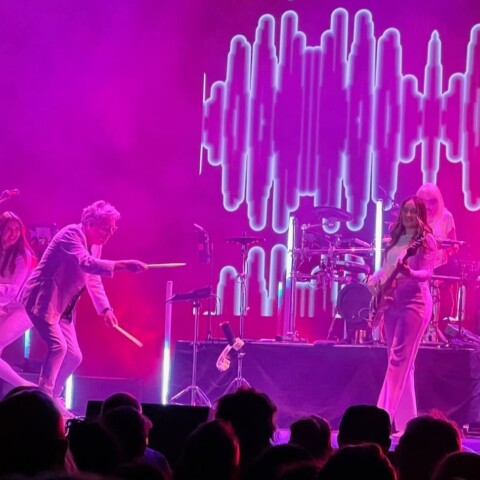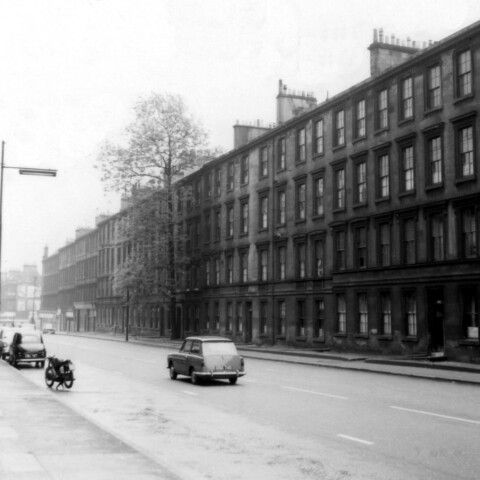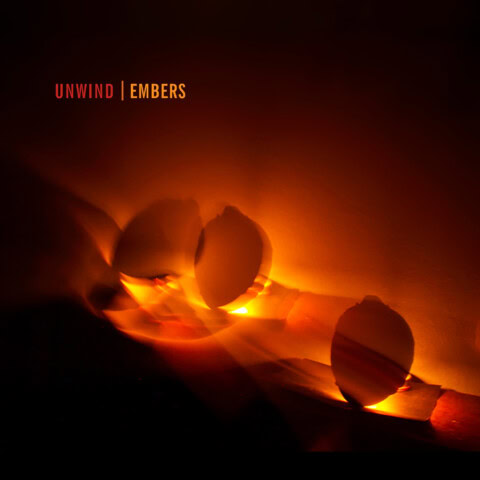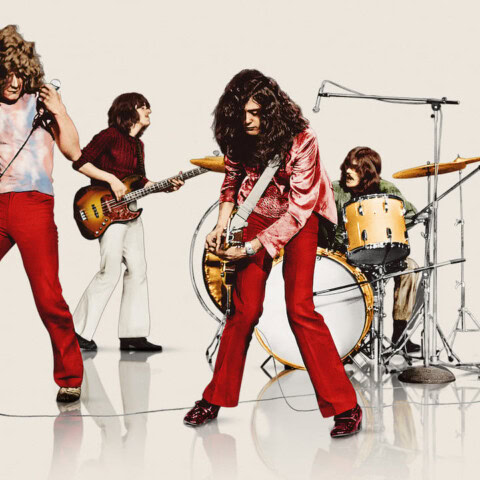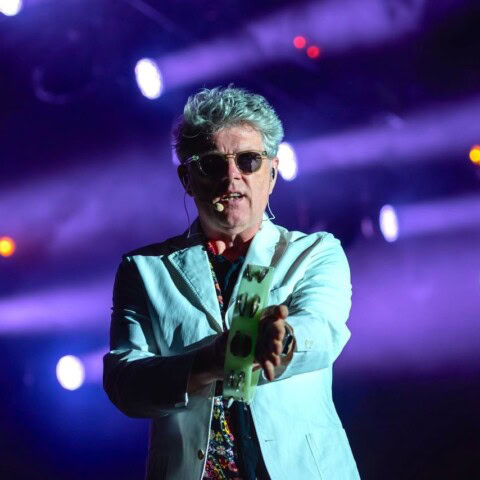Everyone has a first time. In America, that is. I wrote this wide-eyed diary for the now-defunct Wellington newspaper, The Evening Post, in May 1988. In the third and final part of the story [find the first part here, and the second part here], I get to visit the home of many of my most revered pop culture icons: LA.
BY GARY STEEL
 “IN LOS ANGELES, you are your car,” remarked the man at the wheel as the vehicle sped the New Zealand traveller away from LA International Airport.
“IN LOS ANGELES, you are your car,” remarked the man at the wheel as the vehicle sped the New Zealand traveller away from LA International Airport.
Hey, this is just like Auckland, he thought. The same scene; kilometre after kilometre of dreaded suburban blight. How nice, how familiar, how horrible!
As the evening stretched into days and weeks, it became apparent just how true that statement was. Without a car in Los Angeles, you’re nothing. There’s no perspective to be had, and no way of getting anywhere. Driving for hours on end to get wherever you’re going becomes an important ritual; some of life’s most poignant experiences, its best conversations, its most exciting times, can be had in the act of going somewhere in your car.
Although the environment is every bit as familiar as Auckland, that comfortable feeling begins to fade with recurrent expeditions; only after driving and driving and driving does the immensity of this monstrosity begin to sink in.
The prime concern, and raison d’etre, is consumerism. Your car gets you from one consumer point to the next; petrol is cheap, and there’s parking a-plenty. Shopping and eating is all.
The notion of street-level browsing has all but disappeared, apart from a few notable tourist haunts. Los Angeleans shop in enormous centres called Gallerias, which exist in every other suburb. These foreboding mausoleums generally encroach several entire blocks, are multi-leveled and contain an entire city’s worth of shops, all indoors, air-conditioned and germ-free.
You could spend entire days in one centre. Like Romero’s shopping-obsessed zombies in Dawn Of The Dead, the denizens of Los Angeles have attached themselves and their lifestyles to these centres, creating teenage hangouts that put Thursday night in High St, Lower Hutt, to shame. If you want to see and hear a real Valley Girl, go to the Valley Galleria, where, like, oh my God, barf me out, gag me with a spoon… yes, Moon Unit got it just right in the song.
Next to the Gallerias, the most obscene and bizarre shopping institution is the 24-hour supermarket. There are lots of them, they’re huge, and their varieties of what amounts to little more than pre-packaged junk food made to look healthy for the family unit, is astonishing. You cannot get humble muesli, but you can purchase various combinations of multicoloured, sugar-iced cereal sweeties! The nutritional value of 99.9 percent of American supermarket wares is minimal, but the scene itself is thorough entertaining.
The most fun on-street shopping place is Melrose Avenue, a trendy fashion area featuring a number of shops with a punk/S&M leaning. This is the favourite haunt of the Brat Pack: Molly Ringwald and Tiffany do their shopping here.
 One exclusive/alternative menswear shop augments its stock with two huge glass containers in which reside large live crocodiles and small turtles. The tourist was loathe to turn his back on the beasts to peruse the clothes stands. Another shop sold exclusively wind-up toys; it was managed by a t-shirt-wearing “Deadhead” (Grateful Dead fan) who appeared to be firmly in his second childhood.
One exclusive/alternative menswear shop augments its stock with two huge glass containers in which reside large live crocodiles and small turtles. The tourist was loathe to turn his back on the beasts to peruse the clothes stands. Another shop sold exclusively wind-up toys; it was managed by a t-shirt-wearing “Deadhead” (Grateful Dead fan) who appeared to be firmly in his second childhood.
Also to be found on Melrose is a selection of specialist record shops. One caters for nothing but those poor fools still obsessed with obscure English “alternative” bands. Bron’s carries an extensive catalogue which varies from overpriced collectors’ pieces to neglected sale-priced masterpieces languishing in a corner.
Bleeker Bob’s caters for the collector with money to burn. A prized item on its wall is a New Zealand pressing of the Joy Division ‘Transmission’ 12-inch, going for a cool $US200.
The best-named store on Melrose is Retail Slut, which specialises in a variety of bizarre and kinky nick-knacks from unusual clothing to a variety of… ahem, accessories.
It also specialises in personal service from beyond the grave, with shop assistants who guarantee never to crack a smile lest they spoil their artfully constructed gothic painted face and hair mock-up.
For the music fan interested in less specialised record consumption, Hollywood Boulevard offers its own Tower Records branch. There are some 15 Towers in the Los Angeles area, and all of them are massive, supermarket-sized shops, open from 9am to midnight 365 days a year. But the Hollywood Boulevard Tower shop is the scene, and on a Friday or Saturday night it’s convenient stop-off point between a meal at some trendy health food restaurant, and one of many live venues catering for all tastes from heavy metal to “alternative” and weird stuff.
 At one such trendy restaurant, the tourist found himself sitting but one table away from a dangerously inebriated Willy de Ville. When he lurched out of the restaurant, his chums remarked that this was the worst state in which they had seen him.
At one such trendy restaurant, the tourist found himself sitting but one table away from a dangerously inebriated Willy de Ville. When he lurched out of the restaurant, his chums remarked that this was the worst state in which they had seen him.
Around the traps English weirdos Psychic Television were laying their brand of negativity on their clientele, another venue featured an evening of poetry and music by ex-LSD guru and current LA socialite Timothy Leary, members of the band X and ex-Doors keyboardist Ray Manzarek. Somewhere else (and something else), the extreme misogyny of The Mentors was getting lapped up by a bunch of macho blokes.
The New Zealander is escorted to the Anti Club, a relic from the days of post-punk austerity. The drinks are mixed to a potent punch, and the group goes by the name The Mystery Band. And lo! They’re a missing link, a great steamrolling raunch of desert boogie guitar spasms that recalls Captain Beefheart (Don Van Vliet) himself.
Forget the forged, forced American mythologies of Robbie Robertson and Springsteen. This is the real McCoy even if nobody realises it quite yet. Richard ‘Midnight Hatsize’ Snyder – he of the last incarnation of Captain Beefheart’s Magic Band – is bassing, and his Vliet spasms are fusing with frontman Ace’s former life in LA suburban greboes The Child Molesters. A miniscule audience goes bonkers.
 The next day, the alternative tour guide takes the alternative tourist on an expedition. Michael Jackson’s house has a dozen rubbish bags strewn along its front verge, but the Kiwi isn’t quite that curious.
The next day, the alternative tour guide takes the alternative tourist on an expedition. Michael Jackson’s house has a dozen rubbish bags strewn along its front verge, but the Kiwi isn’t quite that curious.
Ah, there’s the real Hotel California. Here’s the motel Jim Morrison lived in and did his dirty deeds in, just down the road from the record company he’d front up at every time he needed another bundle of drinking cash.
There’s the little villa Morrison rented but never used. The famous circular Capitol Records building. Here’s the very spot James Dean fought on Rebel Without A Cause. And that’s the oldest original McDonalds in the world! Yep, that’s the hotel John Belushi kicked the bucket in, all right.
But nothing could quite prepare him for the creepy feeling that descended at the Manson murder house. The house in which the Manson family murdered actor Sharon Tate and others in 1969 nestles in a quiet, expensive suburb with a new street number to deter visitors. The entire street contains a surplus of security measures; a vicious dog in every house.
Los Angeles is still haunted by Manson, and there is a willing and interested audience in any interview with the jailed madman. There is even a record of his singing and songs available at all good shops. How close the man and his madness got to the mainstream of the music business is too scary to contemplate.
Later that night, tour guide and tourist sight the seedy. Lured by a sign that says “cheques cashed, 7 days, No ID required,” the tourist decides to cash some travellers’ cheques. Lights flash at the window, and inside it doesn’t resemble anything the New Zealand has ever imagined a banking institution to be. A Coke vending machine sits in one corner. Malcontented welfare beneficiaries sit on spartan benches, smoking and hacking. Coughing is something to do while they wait for their cash.
Through impenetrable glass shields, smarmy tellers with fixed Joe 90 smiles talk to the customer by telephone.
 Yes, they assure the tourist, they’ll cash his travellers’ cheque. In the course of an hour-long wait, they first inform him there is a 10 percent fee, then that there is an obligatory $3 joining fee, and last, that an obligatory photo ID will cost a further $10, And no, we cannot give your cheque back, sir. It’s already gone through the system.
Yes, they assure the tourist, they’ll cash his travellers’ cheque. In the course of an hour-long wait, they first inform him there is a 10 percent fee, then that there is an obligatory $3 joining fee, and last, that an obligatory photo ID will cost a further $10, And no, we cannot give your cheque back, sir. It’s already gone through the system.
And a little boy urinates in the doorway.
Earthquake rules have meant that Los Angeles is constantly rebuilt, which means there is virtually nothing to remind you of the past. History is constantly eradicated. A fighting remnant from the 1940s still operates in Longbeach.
What was once the amusement park to end all amusement parks in pre-Disney days is now little more than a few ramshackle buildings; accommodation for the semi-derelict, a dingy bar, and the home of Lite-A-Line. The charms of Lite-A-Line soon become apparent. Inside, the ceiling and walls are yellowed by decades of profuse cigarette smoking, and there’s a sign which proclaims Lite-A-Line as the world’s greatest game of skill.
The visitor could never see more than an element of chance in this glorified cross between bingo and pinball, but it wasn’t the game so much as the period feel and the people that made it special.
Lite-A-Line reeks of the 1940s, and so does its dedicated clientele, many of whom have been frequenting the establishment for that many years. In its own twisted fashion, this place represents one of the few havens for a segment of society that isn’t catered for. For its younger customers it is a rare link to the past; for the regular clientele it’s the only focus, the only place left.
While sickness beneficiaries and the fighting down-and-out can find some focus in a relic like Lite-A-Line, there’s no hope for the truly homeless. Cruising inner city streets in the old section of downtown Los Angeles at 2am any morning reveals another world.

Others stand, lined along the pavement as though waiting for something. And they are. They’re waiting for dawn, when they’re allowed back into the city parks again; local law prohibits them from sleeping in the park overnight, and should they venture into one of the nearby “clean” areas, they are briskly kicked out.
Last stop in Los Angeles is Barfko-Swill, the mailorder operation of Frank Zappa’s own record label, Barking Pumpkin. Zappa is one of very few musicians to exploit the substantial possibilities of setting up your own cottage industry. A small staff (which includes Zappa’s wife, Gail, her sister and other family members) run this exceptional operation, which can only be described as the marketing of unusual product to a “market” that cannot be categorised as such. But which, regardless of its non-existence, still spends lots of cash.
From a squat building in one of LA’s poorer suburbs, this team dispatches everything from videos to records, t-shirts and various other memorabilia, and dispense by telephone and leaflet a variety of other information. 818-Pumpkin is a telephone line that will tell you anything you need to know about Zappa-related activities, which include the continuing lobbying against the anti-“porn rock” brigade.
Wads of photocopied material include reams addressed to the censorship issue; press stories, Zappa’s letter to Ronald Reagan, coverage of Dead Kennedys singer Jello Biafra’s obscenity court case; and most interesting, material hijacked from crank religious organisation Freedom Village USA, which calls for the outlawing of ‘Murder Music’, quotes hilariously ‘satanic’ and sexual lyrics, and names the evil groups.
Everyone from Prince to WASP to Bruce Springsteen and Sheena Easton gets the positive thumbs down. Each quoted lyric is preceded by a headline: suicide, killing children, blasphemy, demon possession, sex with a dead corpse, homosexuality and sex with animals and making plaster replicas of genitals for masturbation are but a few of the headings for songs by the rather sorry likes of Dr Hook, Elton John and Kiss.
It calls Boy George “one of the most perverted creatures yet”. We always knew that John Denver was bad for our souls, but the anti-Christ? Strangest of all, it claims that everyone’s favourite 1970s smooth Californian rockers The Eagles are members of “Anton Vey’s First Church Of Satan in California, and the song Hotel California is believed to be about that church.” Could hold water, eh what?
Also on the Pumpkin package is the complete transcript of Frank Zappa’s address to the Senate Hearing on the Porn Rock issue. Those who have slammed Zappa in the past for an attitude that verges on the cynical may appreciate the fact that not only did he donate cash to Jello Biafra’s bankrupting court struggle, but substantial funds from the Barfko-Swill mailorder go towards the anti-censorship struggle.










